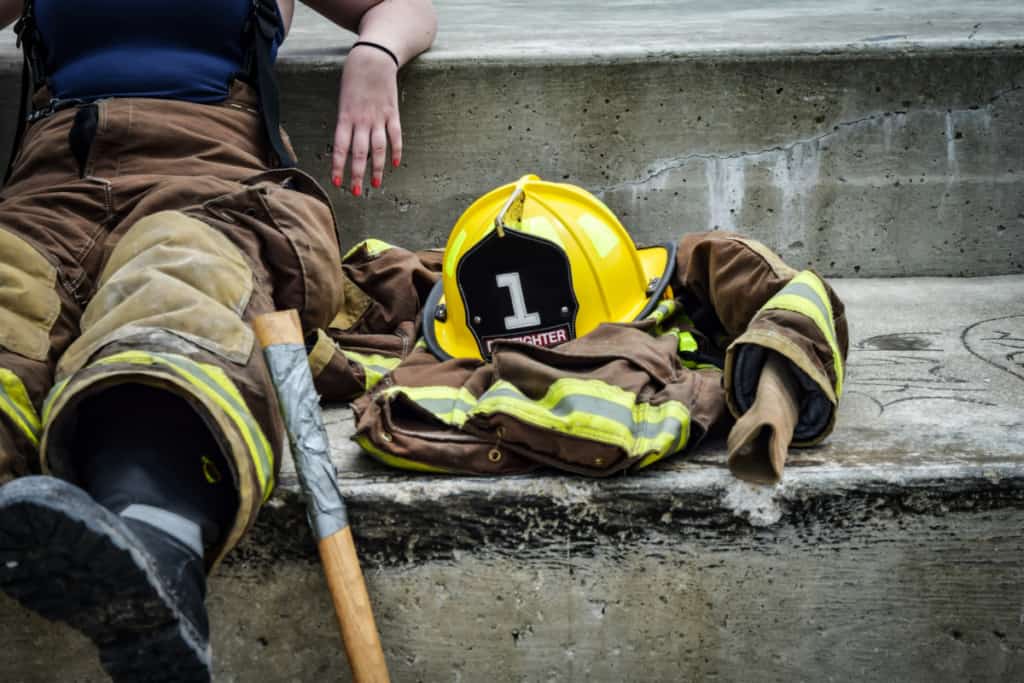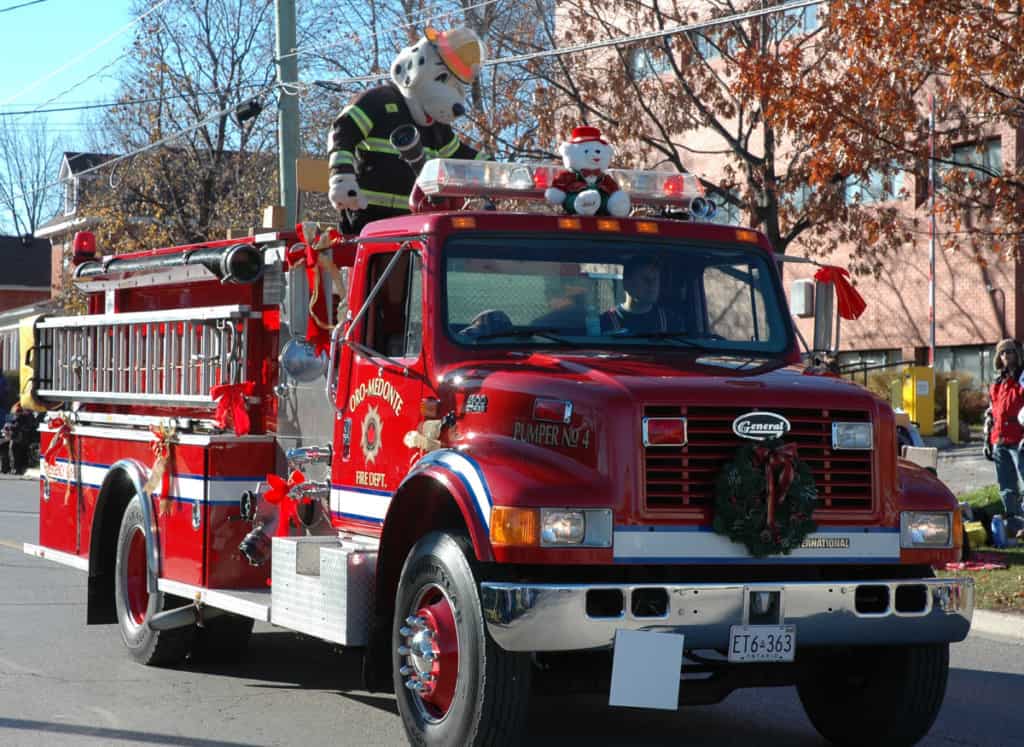Firefighting is a very physically demanding profession. This means there are certain physical requirements that fire departments are looking for in the candidates they hire. As someone looking at becoming a firefighter, you be wonder what those requirements are and if you have what it takes. Is being a certain height one of these requirements?
There is no minimum height requirement to be a firefighter. However, there may be certain job-specific tasks that firefighters need to be able to perform that could be more challenging or even not possible for a shorter person.
This article well give a better look at the physical requirements for firefighters, as well as talk about some tasks that can be more difficult for shorter individuals. Keep reading for some real-world examples to help you decide if you have what it takes to be a firefighter.
Your # 1 priority is keeping your family safe. As a firefighter, I recommend everyone has updated smoke detectors that don’t require battery changes, like these ones from Kidde, a fire extinguisher, like this one from Amerex, and a fire escape ladder if you have bedrooms above the first floor, I recommend this one from Hausse.
Also read: Is There A Weight Limit For Firefighters?
Is There a Height Requirement to Be a Firefighter?
While there are quite a few requirements that aspiring firefighters will face in their journey to becoming a firefighter, a minimum height requirement is not one of them.
I have never seen a fire department that explicitly states you must be a certain height. That doesn’t mean they don’t exist, but for the most part, there are no height requirements for firefighters.
Now, as we discussed above, that doesn’t necessarily mean that your height won’t affect your ability to get a firefighter job. Before getting hired, firefighters will have to go through a battery of tests, one of those being the physical ability test.
The most common physical test is called the CPAT (Candidate Physical Ability Test) (in the United States at least). More and more fire departments are going away from hosting their own physical tests as they did in years past and this is for a variety of reasons (cost, fairness, etc.).
For more information on the CPAT test and details for how to prepare, read: 8 Tips for the Firefighter Physical Test: Passing the CPAT
The CPAT is a test that you will go through before you even apply for a job. Once you pass, you will be given a card that certifies you as having completed the CPAT and this card is used to prove to hiring departments that you have met the basic physical fitness standards for a firefighter.
On this CPAT test, you will be tested in 8 events:
- Stair Climb
- Hose Drag
- Equipment Carry
- Ladder Raise and Extension
- Forcible Entry
- Search
- Rescue
- Ceiling Breach and Pull
Of these events, as long as you have good physical fitness (cardio, endurance, strength), the only ones that could be more difficult for shorter people are the equipment carry, ladder raise and extension, and possibly the ceiling breach and pull.
For the equipment carry event, you will be required to remove to chainsaws from a high shelf that is designed to replicate removing the tools from a side compartment on a fire engine or truck. As long as you can reach the shelf and safely remove the tools, your height should not hold you back.
For the ladder raise, you are required to raise and extend a ladder from the ground up until it is vertical against the wall at the maximum height. This is usually not much of a problem for those with enough upper body strength, but it can be more challenging if you are shorter.
For the ceiling breach and pull, you must use a pike pole to push up and pull down on a weighted prop. This would really only be an issue if you are much shorter than average.
Here is a video that walks you through all the CPAT events:
For more details and FAQ about the CPAT, read this.
If you pass the CPAT and get hired as a firefighter, the challenges you face in the fire academy may be much more difficult.
Throwing a 24′ ladder alone can be challenging to learn and is much more difficult for shorter individuals. This is usually one of the tasks that shorter firefighter candidates struggle with. Both removing the ground ladder from the engine or truck and raising (throwing) the ladder can be harder if you aren’t tall.
This video shows the process, but don’t be fooled with how easy it looks, it takes strength and skill:
And there may be quite a few other physical challenges you will face. What you lack in height, you will need to make up for in strength and technique.
While I am not very short (5’8″ male), things like ladder throwing take more effort and skill for me than they do for my coworkers who are 6′ or more.
For more information about firefighter fitness, including training details for the CPAT and fire academy, read: The Fitness Requirements for a Firefighter – Explained
That being said, I work with a few firefighters (both males and females) who are pretty short (5′ to 5’5″) that are great firefighters and do not let their height hold them back. I’m sure there are amazing firefighters out there who are even shorter.
Can You Be a Firefighter if You Are Short?
Even though there are no specific height requirements to be a firefighter, shorter people may have more difficulty with certain firefighter tasks, depending on how short they are. However, even people below average height can still be firefighters.
We discussed some of the challenges for shorter people in both the physical fitness tests and the fire academy above. But there can actually be some advantages to being on the shorter side as a firefighter.
While throwing ladders might be easier for taller firefighters, fitting into small spaces can obviously be much easier for shorter, smaller firefighters.
For example, the confidence course is a regular part of firefighter training. It is designed to simulate the tight, awkward spaces that you may need to crawl through in a fire.
Here is a video showing what a confidence course can be like:
Think about how much easier this would be for smaller firefighters to get through. While your height might be a drawback in some areas, it can actually be a huge asset in others.
Requirements for Firefighters
While firefighters don’t need to be a certain height to apply, there are other requirements that they must meet. These requirements will vary by department, but, here are some of those requirements:
- Be at least 18 years old (sometimes 21 years old)
- Have a High School Diploma or GED
- Have a valid Driver’s License
- EMT (Emergency Medical Technician) Certification
- Have good physical fitness
- Have a clean history/record
- Some jobs require you to be a licensed Paramedic
- Some jobs make require college classes or a degree
Here are some articles that can answer your questions about all these requirements to become a firefighter:
- What Is the Age Limit to Become a Firefighter?
- What Is a Firefighter Endorsement?
- Do Firefighters Have to Be Paramedics or EMTs?
- 7 Reasons Firefighters Show Up At Medical Emergencies
- The Fitness Requirements for a Firefighter – Explained
- Can You Be a Firefighter with a Criminal Record? (Felony, Misdemeanor, 5150)
- What is a Firefighter Paramedic? The Job Explained
- What Should/Do Firefighters Major In? Firefighter College Degrees
Conclusion
Fire Departments can have strict standards for who they hire to be firefighters, and for a good reason, they need to be sure the candidate can perform all the tasks expected of a firefighter. However, there is no height requirement to be a firefighter. As long as you can prove you are able to do all that is required of a firefighter, you can be a firefighter at any height.
Related Articles
Can You Be a Firefighter with Past Drug Use?
How to Become a Firefighter: The Complete Guide
Can You Be a Firefighter with a Disability? What You Should Know

